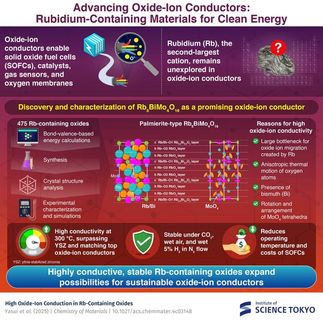Conductor turned insulator amid disorder
Advertisement
Some materials that are inherently disordered display unusual conductivity, sometimes behaving like insulators and sometimes like conductors. Physicists have now analysed the conductivity in a special class of disordered materials. Martin Puschmann from the Technical University Chemnitz, Germany, and colleagues have demonstrated that electrons in the materials studied display a multifractal spatial structure at the transition between conductive and insulating behaviour.
The disordered materials under scrutiny in this study consist of networks of atoms that are connected randomly, in contrast to the regular alignment of atoms within a crystal. They are found, for example, in amorphous solids such as glass as well as in biological tissue made of an assembly of cells. The random organisation of the atoms dramatically affects the electrical conductivity at the quantum scale.
To study the specific characteristics of electric conductivity, the authors performed large-scale computer simulations. They first created model lattices with randomly positioned atoms and connections. They then computed the function describing how the electrons move on these lattices--known as quantum-mechanical wave functions. If these wave functions spread out, the material is a conductor, if they remain localised, it is an insulator.
Incidentally, over fifty years ago, Philip Anderson showed that impurities and defects can turn materials from metallic-style conductors into insulators.
When the material is right at the threshold between conductor and insulator, the electron wave functions have a most peculiar spatial structure, as Puschmann and colleagues show. Indeed, they are multi fractals-- interwoven sets of different fractals, each with its own dimension. By computing and analysing the spectrum of these dimensions, they obtained a fingerprint of its spatial structure. This, in turn, opened the door to understanding how the disorder turns the material from conductor to insulator.
Original publication
Most read news
Original publication
Martin Puschmann , Philipp Cain, Michael Schreiber, Thomas Vojta; "Multifractal analysis of electronic states on random Voronoi-Delaunay lattices"; European Physical Journal B; 2015
Organizations
Other news from the department science
These products might interest you

Get the chemical industry in your inbox
By submitting this form you agree that LUMITOS AG will send you the newsletter(s) selected above by email. Your data will not be passed on to third parties. Your data will be stored and processed in accordance with our data protection regulations. LUMITOS may contact you by email for the purpose of advertising or market and opinion surveys. You can revoke your consent at any time without giving reasons to LUMITOS AG, Ernst-Augustin-Str. 2, 12489 Berlin, Germany or by e-mail at revoke@lumitos.com with effect for the future. In addition, each email contains a link to unsubscribe from the corresponding newsletter.





























































